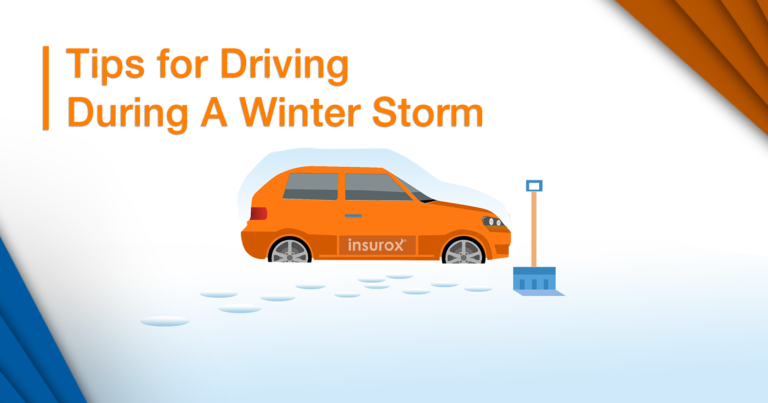

The most important thing while driving during a winter storm is knowing how to drive safely. There’s a lot of different weather events that will surely affect your driving. These tips will help you stay in control of your vehicle in all of the weather conditions, making driving during a winter little easier.
Always remember: Never drive your vehicle if your windows, grill, headlights and tails lights are covered in snow. Make yourself visible and make your viewing angles better.
Tips For Driving During A Winter Storm
Driving in icy conditions can be deceptive, the worst is when “black” ice forms on the roads. Black ice occurs when the temperatures are the coolest. If the temperatures are very low even the rain can freeze on the ground on impact. Sleet and the refreezing of snow or water can also generate black ice.
1. Keep a close eye on the road surface.
Most of the time, black ice is difficult to see while driving during a winterstorm. Always pay close attention to the road surface in icy conditions, avoid the pavement that looks dark or like new asphalt. Plus, bridges or elevated roadways are more likely to form ice.
2. Know how your vehicle behaves on ice.
Driving on ice can be deceiving and very unpredictable. Avoid panicking, doing abrupt turns and aggressive braking, this won’t help you. Also, make sure all of the objects inside or outside the vehicle are secured. Unsecured objects could result in a serious injury. If you are sliding on ice and unable to stay in control, follow these steps:
- Don’t panic.
- Don’t brake aggressively.
- Take your foot off the pedal.
- Slow your car down enough so the wheels gain traction and you regain control.
3. Don’t stop on hills
Tires can spin and lose traction on ice, especially on uphill roads. If you are driving up a hill, avoid stopping because you risk losing traction. If you are going down a hill, drive slowly and make sure that you have time in case you need to stop. And always make sure you have 8 to 10 seconds gap between you and the car in front of you to avoid a collision.
Snow comes in many different forms with different types of dangers. Small snowflakes can limit your visibility and build ice on the windshield. Large snowflakes can pile up fast and cause slippery road conditions.
1. Slow down
Snow on roadways can be just as slippery as ice. If you see a buildup of snow on the road in front of you or even just a dusting, understand that you may not have the same level of control that you are used to when turning and braking. Always slow down your vehicle so you have more time to react to unexpected situations.
2. Increase following distance
Braking is dangerously tricky even in light snowing conditions. Your vehicle can take double the time to stop in comparison to dry condition. Make sure that there is at least 8-10 seconds time gap between you and the vehicle in front of you.
3. Pay attention to other drivers
You have to be a little bit more aware and focused while driving in areas with snow covered roads. Because other drivers may have a hard time seeing you and adjusting to snowy conditions. Also always have at least 8 seconds or more of driving time between you and the car in front of you.
When it’s snowing very heavy, it can create dangerous whiteout conditions. Visibility might be limited, and you might not be able to see the road surface or markings.
1. Slow to a snail’s pace
Losing your visibility during whiteout conditions is the most dangerous thing that can happen while driving during a winter storm. This makes it difficult for you to see where other drivers are and they also have a hard time seeing you. Make sure you drive slow so you have time to react to the unexpected.
2. Make yourself as visible as possible.
In whiteout conditions, it can be very hard for drivers to see each other. So most important thing is to make yourself visible as much as you can. Turn on all your headlights (turn on fog lights if you have them). Consider turning on your hazard lights if you drop below the speed limit to alert other drivers.
3. Stop and wait it out
If the whiteout conditions completely blocked your view, or you feel unable to appropriately see other vehicles or control your own automobile, look for the nearest exit to wait out the storm. It’s safer if you can get to a shoulder of a road with a lower speed limit to reduce the chances of a high-speed accident where more damage/injuries could occur. If there is no other option, just pull over to the side of the road, turn on your hazard lights, and wait out the whiteout. If needed, run your engine every hour for 10 minutes at a time for heat. Crack the window to avoid carbon monoxide poisoning and occasionally clear snow away from the exhaust pipe if it is piling up significantly.